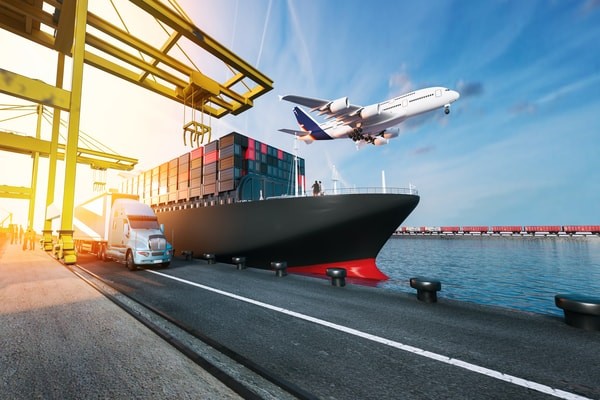Blog Detail
What Are The Major Challenges In Trade Finance And How To Manage Them?

Operating business internationally i.e. across the border is way more difficult than operating domestically due to obvious reasons such as differences in languages, rules & regulations, culture, politics, legislation, foreign currency fluctuations and logistics of exporting & importing, etc. Understanding the associated risks, dynamics, and difficulties of international trade is crucial for importers & exporters to carry out safe, reliable & successful overseas transactions. Managing & mitigating risks is a key to expanding a business in the international market.
Here different types of trade finance instruments work as a part of international trade and support global traders avoid these risks among the parties involved in the international transactions. According to a report by the WTO (World Trade Organization), 80 to 90% of overseas trade relies on short-term working capital from trade finance providers. However, buyers & sellers across the world are facing several challenges in international trade.
In this guide, we are focusing on those major challenges to give you a better overview of the risks so that you can manage the solutions efficiently and ensure smooth trade transactions. Here they are as follows:
1. Payment/Buyer’s Credit Risks - No one likes to chase someone down in everyday context who owes them a significant amount especially when it involves cross-border transactions. But unfortunately, amongst all other threats or challenges in international trade, the foremost threat which is being faced by exporters/sellers across the borders is failure to get payments from buyers/importers. Buyers usually work on the principle of “Ship Now, Pay Later” which is known as an Open account or sale contract. Though a debt collection agency can be used, results are not guaranteed and a portion of the recovered amount will be due to them also that decreases your profits. So what is the solution?
Recommended Read: How Trade Finance Reduces Global Trade Payment Risks?
Solution - The most reliable, & guaranteed way to ensure on-time payment from the buyer is getting an issuance of a Letter of Credit Services from a third party like a bank or a private financial institution through a confirmed LC or payment guarantee letter. This way, the seller is assured of getting an on-time payment from the bank in the event if the buyer defaults or is unable to pay.
2. Foreign Currency Fluctuation Risks - FX ie Foreign Exchange risks refer to the risks arising from the unpredicted fluctuations in the currency conversion rates. It can occur due to a variety of reasons such as monetary policy, economic situations, government actions or speculations by currency traders, etc. In some cases, it can decrease costs and vice versa.
Solution - The possible solution could be determining a fixed rate of exchange while signing an international trade contract along with the price, date, and quantity of order. This type of contract is called a forward foreign exchange contract. The stability in the exchange rate reduces the risks and makes it easier to initiate a transaction.
Recommended Read: How to Keep Your Foreign Exchange Transactions Safe
3. Paper-Based Trade Finance - Today the process of trade finance is still paper-based. The absence of digitization and electronic processing increases the trade finance dependency on the long paper trail, resulting in a prolonged, daunting & time-consuming procedure for both parties. The verification of the trade documents is a time-consuming process for banks, causing a delay in delivering documents to buyers & sellers, and making it difficult to release funding on time.
Solution - The possible solution is being seen in a blockchain network. It could promote digital trade finance and eliminate several issues in trade finance by replacing paper-based processes and ensuring security & complete transparency of the supply chain. It thereby can reduce processing time to a minimum level.
4. Transportation/ Logistic Failure Risks - Logistics or transportation in international trade plays an important role in getting ordered goods safely from the exporters to the buyers. But there are risks associated with the movements of the goods such as containers can fall off the ship, accidents, goods can be damaged during loading & unloading or go missing, etc.
Solution - These risks can be reduced by cargo insurance which is generally defined by standard international policy wordings. The agreed terms highlight who will be responsible for arranging insurance, buyer or seller. Apart from this, in a FOB arrangement ie “free on board”, the buyer bears the responsibility for transportation and title of goods as they are loaded in the port of embarkation. While in “DDP” ie. “delivered duty paid”, the buyer bears no words regarding the delivery process. It is the exporter who will arrange insurance.
5. Quality of Goods - There may be a possibility in international trade finance that the goods that are delivered are found to be damaged, faulty, incomplete, or simply unacceptable. What to do in this situation?
Solution- Clearly an exporter is responsible for the delivered goods and there must be proper paperwork between the buyer & seller. The buyer can get a claim from the exporter if the goods are not matched with the purchase order. Here, different types of bills of lading can be used such as a Clean BOL denoting that the cargo is in good condition or was not damaged during the shipment. While a dirty BOL is just the opposite due to a clause where the shipowner can declare the delivery of damaged goods.
6. Product Risks -These are those risks that have an implied acceptance in the hands of the suppliers. There can be disputes between the buyers & sellers regarding the unmatched delivery of goods due to negligence during production, or weather conditions, etc.
Solutions - There must be a well-described contract between both the parties regarding safe delivery of goods.
7. Manufacturing Risks - These risks are common for products that are tailor-made or involve some specifications from the buyer. The seller is responsible for covering costs of any rearrangements of the product until the buyer finds it perfect as these products cannot be resold to any other buyer.
Solution - To mitigate the risks for both the buyers and sellers, the contract must mention the terms of payments and prescribed design, and delivery of the products.
Recommended Read: Supply Chain Management Risk: Ways To Mitigate Risks & Safeguard Your Supply Chain
These are some of the most common yet prevailing risks & challenges being faced by importers & exporters across the world in international trade transactions. The ability to understand and use the right trade finance instruments are the best ways to mitigate these risks.







